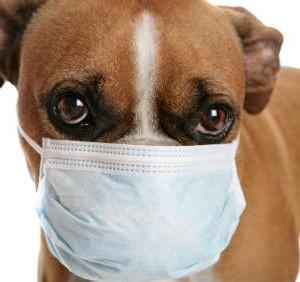
Coughing is a reflex initiated by an irritation in the airway. Coughs are caused by respiratory infections, congestive heart failure, chronic bronchitis, respiratory tract tumors, collapsing trachea, pressure from tight collars, and inhaled irritants such as grass seeds, fumes, and food particles. Coughs are self-perpetuating. Coughing dries out the mucous membranes and irritates the breathing tubes leading to further coughing.
(Check out Vaccination 101: Understanding the Importance of Dog Shots)
Diagnosing a Cough
The type of cough often suggests the diagnosis:
- A deep, dry, hacking cough made worse by exercise or excitement is characteristic of kennel cough.
- A moist, bubbling cough indicates fluid or phlegm in the lungs and suggests pneumonia.
- A high, weak, gagging cough, followed by swallowing and licking the lips, is characteristic of tonsillitis and sore throat.
- A spasm of prolonged coughing that occurs at night or while lying on the sternum suggests heart disease.
- A “goose-honk” cough in a toy breed dog indicates a collapsing trachea.
The diagnostic workup of a dog with a chronic cough includes a chest X-ray and transtracheal washings. Washings are cells obtained by flushing the trachea with saline solution. This can be done with a sterile tube passed down the trachea while the dog is sedated, or by direct penetration of the trachea through the skin of the neck using a needle and catheter. The washings are processed for cytology and bacterial culture. The information usually leads to a specific diagnosis.

Bronchoscopy is particularly useful in the investigation of chronic coughs and coughs with the production of mucus and blood. The procedure requires sedation or general anesthesia. A rigid or flexible endoscope is passed into the trachea and bronchi. This enables the veterinarian to see the interior of the respiratory tract. Biopsies can be taken with accuracy, and washings collected for examination and culture. Bronchoscopy is also the procedure of choice for removing bronchial foreign bodies.


